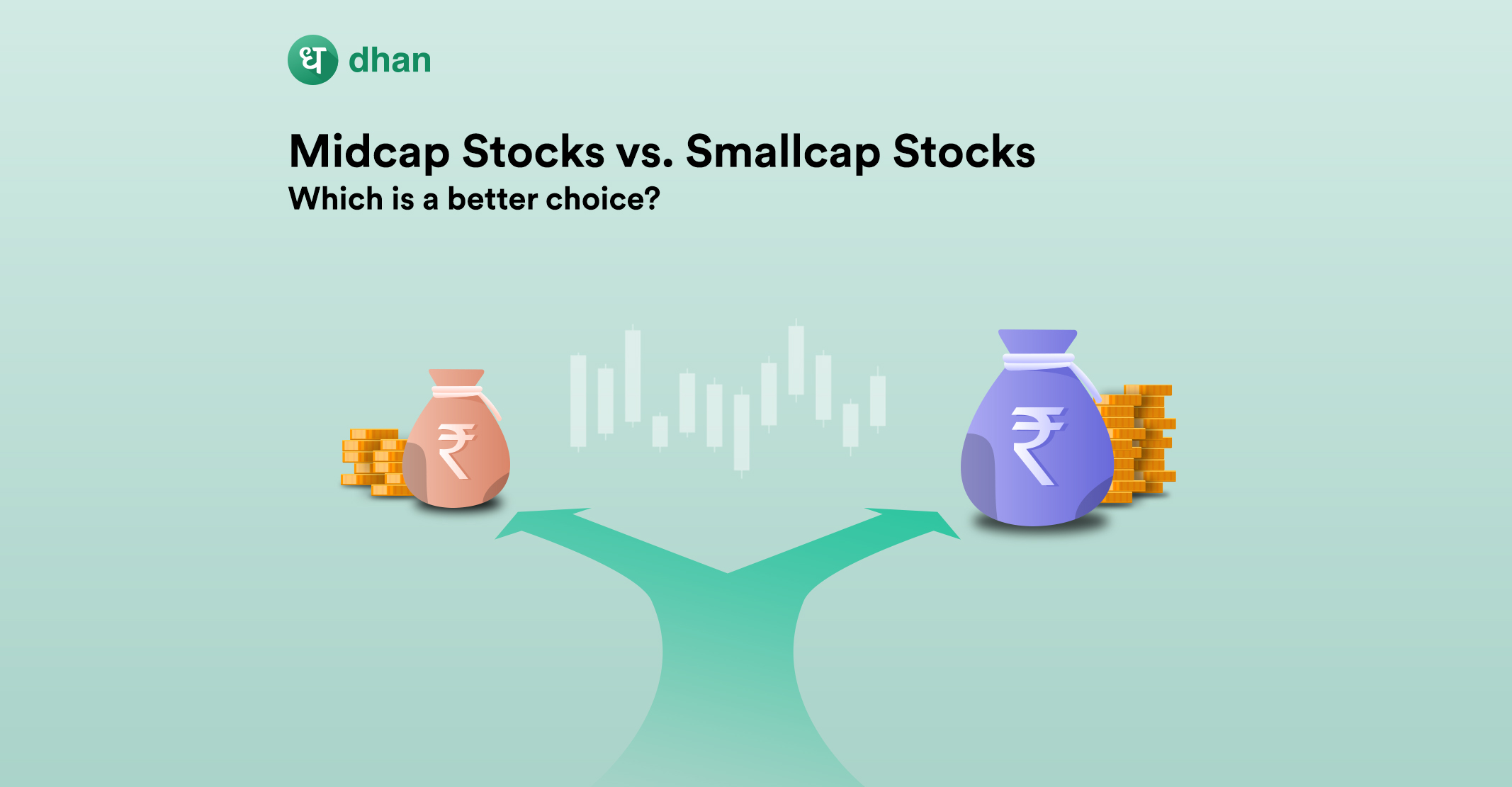As an investor just stepping into the stock market to start your online investing journey, you should know different stocks and their types as per their market capitalisation. This way, you will be able to choose and make an informed investment decision. Several stocks are based on their market cap, such as, midcap stocks and smallcap stock.
The categorisation of the stocks based on their market capitalisation, makes it easier for the investors to make an informed decision and helps them form a sound investment strategy. Let’s understand the difference between midcap and smallcap stocks.
List of few Midcap Stocks in India
| Company Name | LTP as of *24th June 2022 |
| Crompton Greaves | ₹ 343 |
| Escorts | ₹ 1,521 |
| Polycab India | ₹ 2,220 |
| Deepak Nitrate | ₹ 1,820 |
| Gujarat Gas | ₹ 420 |
| Amara Raja Batteries | ₹ 467 |
| Crisil | ₹ 3,200 |
| Voltas | ₹ 991 |
| Mindtree | ₹ 2,832 |
| VST Industries | ₹ 2,988 |
List of few Smallcap Stocks in India
| Company Name | LTP as of *24th June 2022 |
| IEX | ₹ 174 |
| Nesco | ₹ 540 |
| Thyrocare Technologies | ₹ 628 |
| Delta Corp | ₹ 172 |
| Bajaj Consumer Care | ₹ 284 |
| JK Paper | ₹ 467 |
| CARE Ratings | ₹ 416 |
| Affle India | ₹ 1,017 |
| GNFC | ₹ 582 |
| Justdial | ₹ 563 |
Midcap Stocks vs Smallcap Stocks at a Glance
Below is a detailed comparison between midcap and smallcap stocks:
| Parameters | Midcap Stocks | Smallcap Stocks |
| Meaning | Midcap stock is a term to denote a company whose market cap or market value is between Rs 5,000 Cr. to Rs. 20,000 Cr. These companies are smaller compared to large-cap ones but have full potential to become one. | Smallcap stock is a term used to denote a company whose market capitalisation or value is less than or equal to Rs. 5,000 Cr. These companies are relatively smaller than midcap and have significant growth potential. |
| Volatility | Midcap stocks are slightly volatile and involve a certain amount of risk. | Smallcap stocks are highly volatile compared to midcap stocks, and their prices can also fluctuate, increasing the risk for investors. |
| Growth Potential | Midcap stocks have good growth potential. | Smallcap stocks have much higher growth potential as smallcap companies have significant growth potential and can often outperform others. |
| Liquidity | Midcap stocks offer low liquidity as the demand for the stocks of a midcap company is lesser than companies that dominate the industry. | Smallcap stocks offer the least liquidity as the smallcap companies compete with large-cap and midcap companies and are still new in the industry. |
| Risk | Risk involved in midcap stocks is high because the midcap companies may or may not be able to cope with market volatility compared to large-cap company. | Risk involved in smallcap stocks are higher than midcap stocks. Although these companies have a significant potential for growth, there is the probability that they may not be able to cope with market volatility as compared to midcap companies. |
Take Away
In your investment portfolio, the market capitalisation of stocks plays a vital role. The share market has its ups and downs daily, and if you are planning to invest in stocks, you should know about market capitalisation and stocks based on it. The performance of midcap and smallcap funds vary significantly due to their inherent nature and hold on the market. We hope the comparison mentioned above between the two can help you make an informed investment decision.
You can also read:
- What is Nifty Bank? – List of Nifty Bank Stocks
- What is Nifty 50? – List of Nifty 50 Stocks
- Top 5 Banking Stocks In India – Best Bank Shares to Buy
- Top 5 Pharma Stocks in India in 2022 – Best Pharma Stocks
- Top 5 Electric Vehicle Stocks in India
Happy Investing 😇
Disclaimer: This blog is not to be construed as investment advice. Trading and investing in the securities market carries risk. Please do your own due diligence or consult a trained financial professional before investing.




Comments are closed.